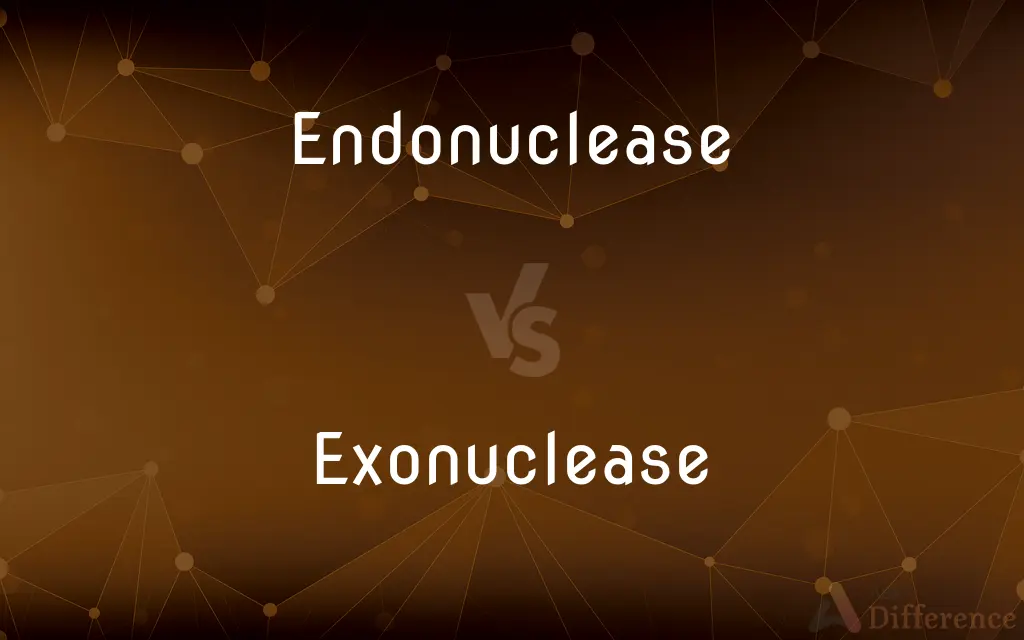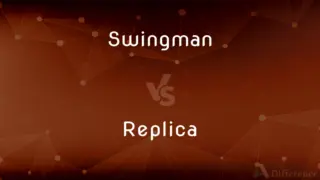Endonuclease vs. Exonuclease — What's the Difference?

Difference Between Endonuclease and Exonuclease
ADVERTISEMENT
Compare with Definitions
Endonuclease
Endonucleases are enzymes that cleave the phosphodiester bond within a polynucleotide chain. Some, such as deoxyribonuclease I, cut DNA relatively nonspecifically (without regard to sequence), while many, typically called restriction endonucleases or restriction enzymes, cleave only at very specific nucleotide sequences.
Exonuclease
Exonucleases are enzymes that work by cleaving nucleotides one at a time from the end (exo) of a polynucleotide chain. A hydrolyzing reaction that breaks phosphodiester bonds at either the 3′ or the 5′ end occurs.
Endonuclease
Any of a group of enzymes that catalyze the hydrolysis of bonds between nucleotides in the interior of a DNA or RNA molecule.
Exonuclease
Any of a group of enzymes that catalyze the hydrolysis of single nucleotides from the end of a DNA or RNA chain.
Endonuclease
(enzyme) Any enzyme which catalyzes the cleavage of nucleic acids so as to produce variously sized fragments.
ADVERTISEMENT
Exonuclease
Any of a group of enzymes which cleave single nucleotides from the end of a polynucleotide (DNA or RNA) chain.
Endonuclease
A nuclease that cleaves nucleic acids at interior bonds and so produces fragments of various sizes
Exonuclease
A nuclease that releases one nucleotide at a time (serially) beginning at one of a nucleic acid
Share Your Discovery

Previous Comparison
Swingman vs. Replica
Next Comparison
Halal vs. Kosher















































